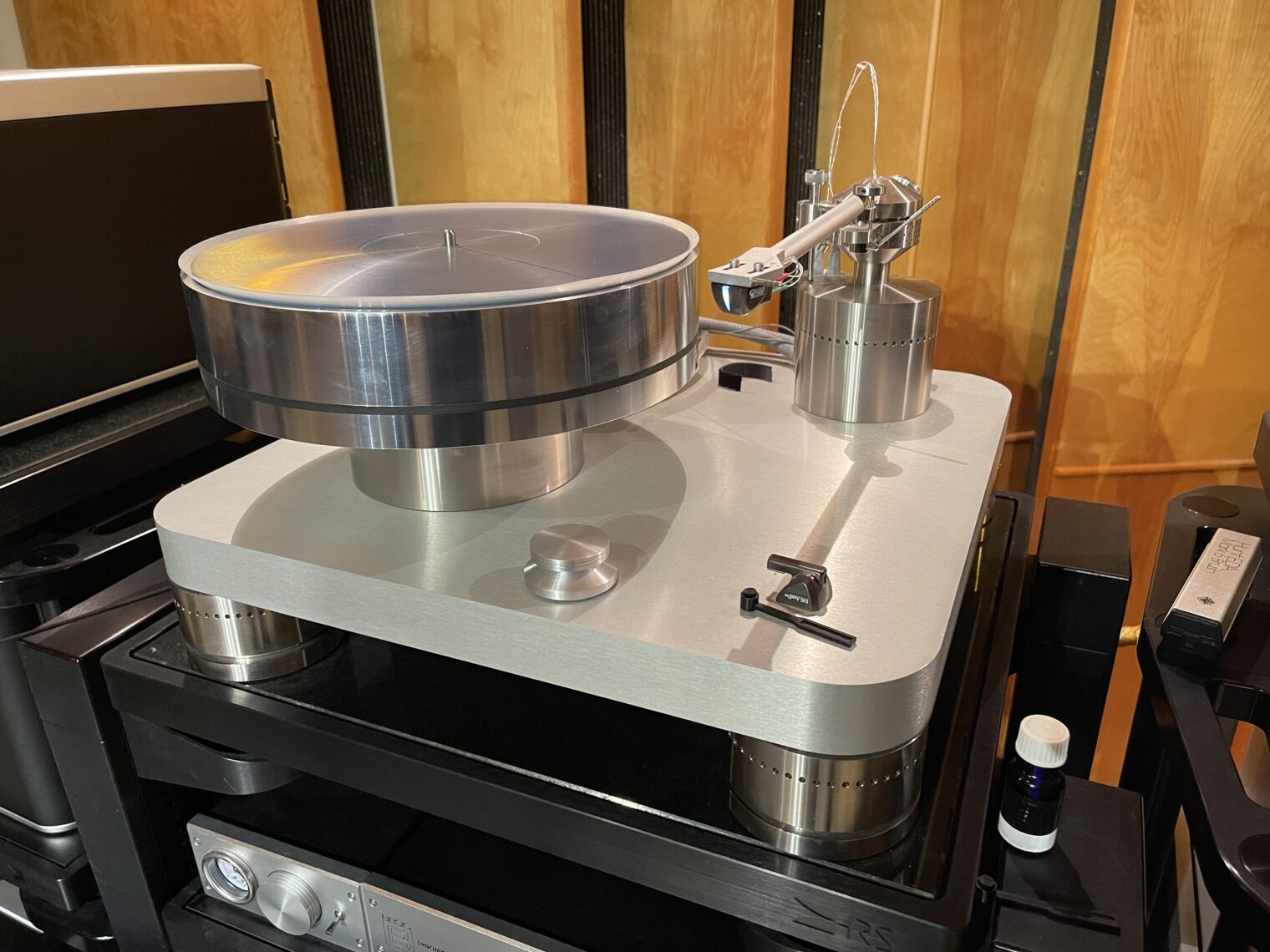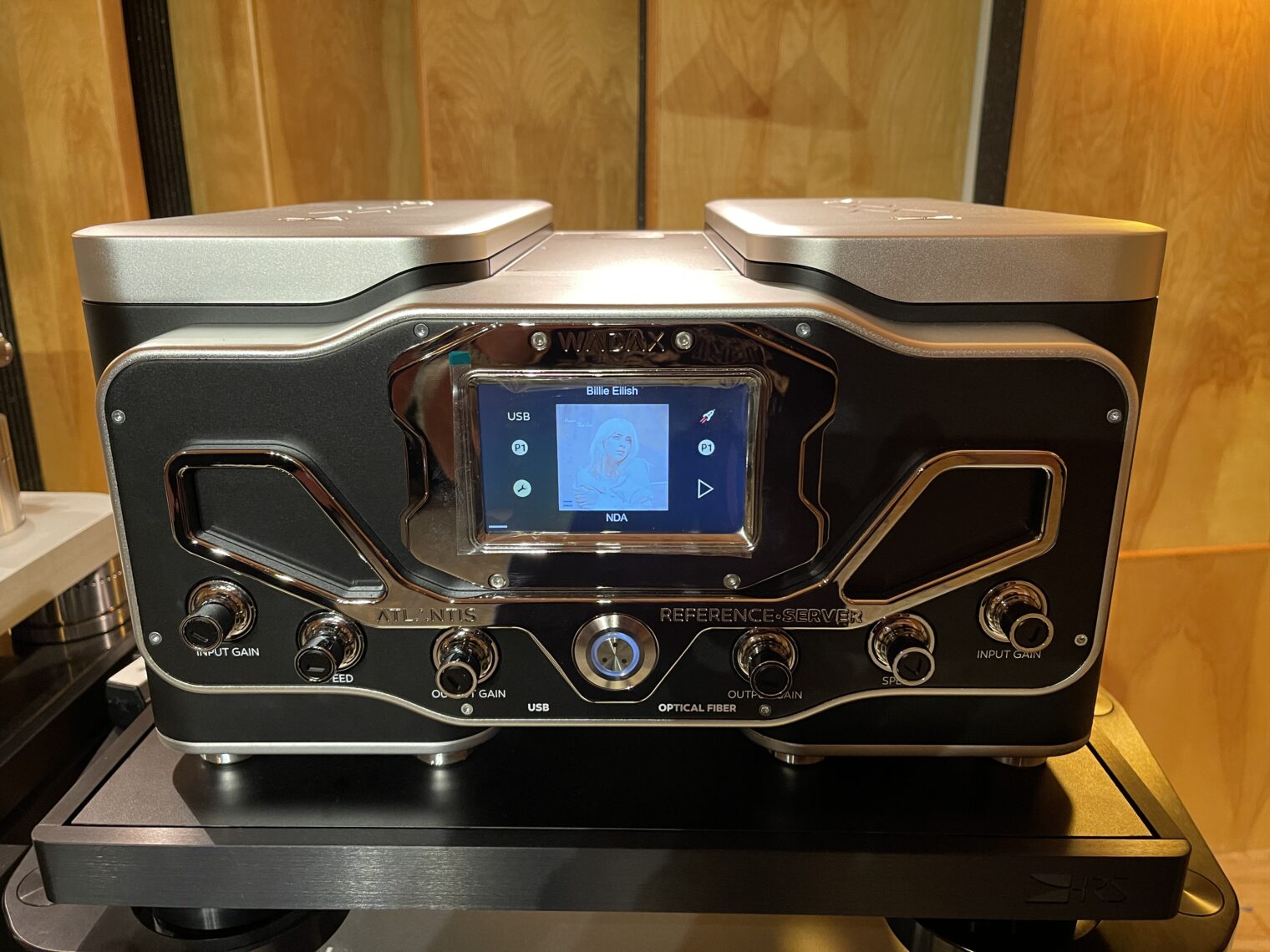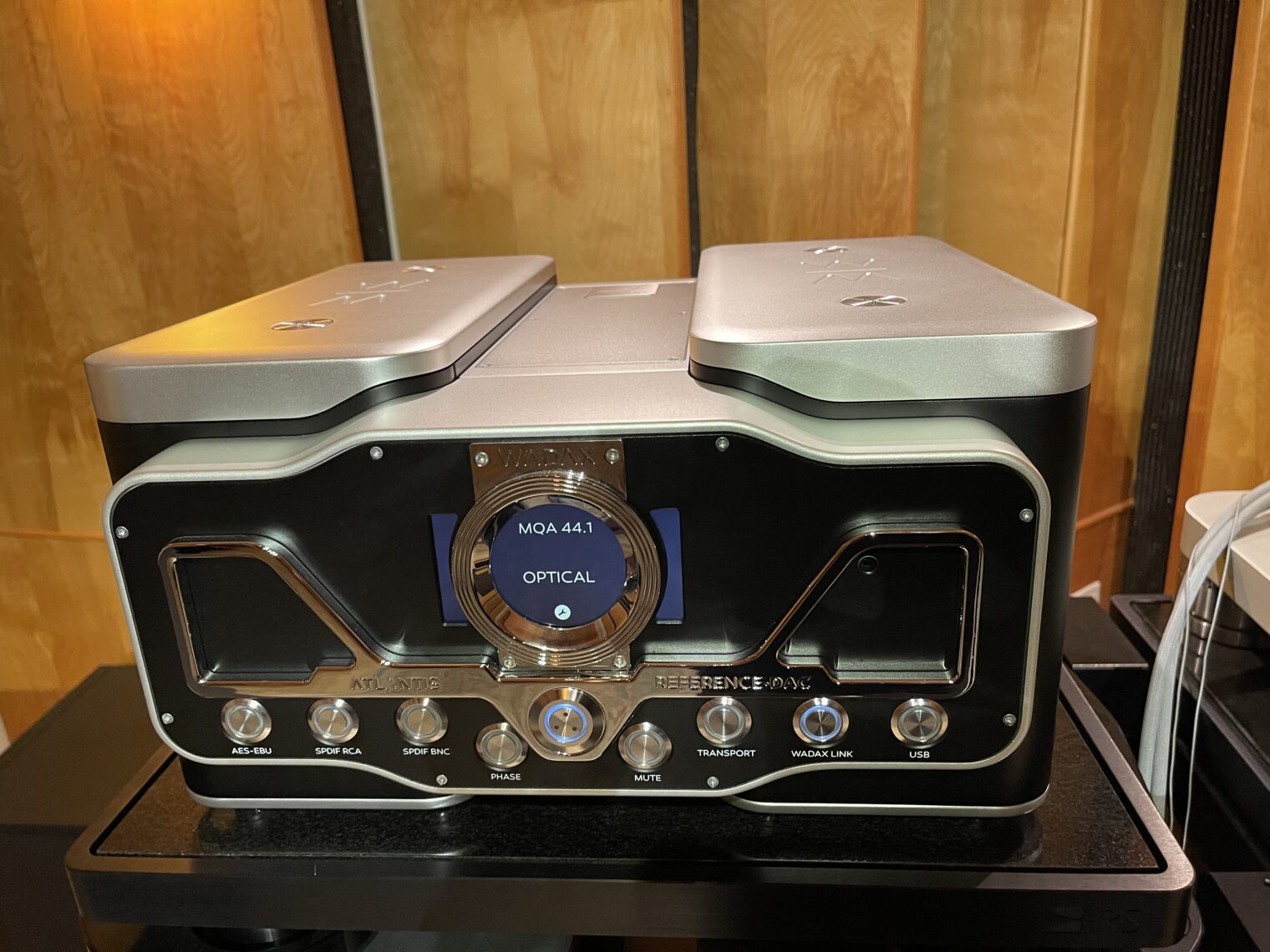I stopped by Goodwin’s High End, an audio store that has been going reasonably strong since 1977. Coronapanic has been great for business. Governors helpfully locked people into their homes where they had little else to do other than seek maximum sound quality. “We have customers in all 50 states now,” said Alan Goodwin.
What’s state of the art in turntables these days? A $120,000 Basis:
What if you want to listen to digital? You download, maybe from hdtracks.com, to a local specialized server and connect that to a microwave-sized D/A converter:
Streaming is generally best for browsing rather than critical listening, but if you must stream, Tidal and Qobuz are reasonable options.
Electrostatic speakers are no longer in. It is all about dynamic speakers, individually priced only slightly more than a new car.



Looks like that turntable uses a physical stylus. If cost is no object, isn’t the no-contact laser method better?
https://diffuser.fm/laser-turntable/
Dan: I think the laser turntable was an appealing idea until people actually built it. The mechanical stylus bulldozes most fine dust out of the way, while the laser turntable amplifies every dust particle as a pop. Laser turntables can be used only in conjunction with wet washers for the records.
Not sure what all this expensive electronics has got to do with music. Nothing will replace live opera or symphony performance for many years to come (if of course there will be anyone left interested in these sorts of things). A $50 player, for a true music lover, will recreate a live performance in his brain just as easily.
I remember talking to an accomplished piano player who was amused by his college age son spending money on golden speaker wires to improve “fidelity”.
Age, alas, destroys the receptors for true fidelity. I can’t hear it all even in person. Enjoy the creativity but no longer the nuances of sound.
I think this post is timely given my comment in the recent post entitled “Archival properties of CD-ROMs after 20 years”! The only question readers have for you is… Have you noticed any hearing loss as a result of flying small planes? Especially in higher frequencies?
Compression and quantization/sampling are often conflated by those hyping “high res or high def” audio.
There are indeed significant compression artifacts that are pretty easy to hear with low bitrate mp3 and similar compression such as satellite radio, etc … Many people don’t care, but almost all people can hear the difference in A/B tests.
Hardly anyone can hear the difference of produced uncompressed audio sampled and quantized according to CD standards vs. the higher sampling rates or lower quantization (greater bit depth) hyped by high res/def audio equipment manufacturers.
Human ears just aren’t that good, and investing in various boat anchor equipment that has specs beyond CDs is just a waste of money.
See https://audiophilereview.com/audiophile/the-truth-about-high-resolution-audio-facts-fiction-and-findings/
If you want good sound spend your money on better speakers, near field desk monitors, or headphones that get rid of the often lousy acoustics of the room you are in. And use uncompressed, lossless compressed, or high bitrate compressed audio. Make sure you don’t have hum from ground loops (a common problem), dirty connectors, or interference from nearby cellphones (also common). And if you have a theater / subwoofer setup make sure all the channels are working as often some fail and people don’t notice, as human perceptions adapt.
Do that and you will have as high def/res audio as human beings can hear.
The rest is just paying for expensive furniture in the form of equipment. Better for anchoring boats perhaps. But not much else that much smaller, cheaper equipment can’t do.
Can someone explain what happened to using a CD player as a high quality audio source, for those of us who are not interested in LPs?
Are the high end downloaded digital files higher fidelity or something?
I can’t figure out why anyone would bother with downloading or streaming digital tracks, with all the associated need for a D/A converter, etc, when CDs are readily available.
Amazon Music HD and UHD is a better experience than Tidal, streaming lossless FLAC.
Every ten years or so I make a trip to a high-end audio store to lounge around and bother the staff as a nonpaying gawker, trying not to be too nettlesome, but I do like to look occasionally at what the recent gourmet sound equipment looks and costs like. I’m glad they’re doing well, I don’t mind the bright spots in a dismal situation even if they’re not in my solar system.
My reality is much more mundane. I have an MP3 quality question for the cognoscenti: I’ve bought a few albums now from Amazon, including a couple of CDs., and I also used their AutoRip service several times to download the buy the MP3s.
How do they MP3s “stack up” in your experience? Here’s some show-and-tell:
Using Amazon Music PC you have the option to download the MP3s, but the app. is a little cagey about where it puts them. After you’ve downloaded them, click on the vertical dots and select ong(s), click on the vertical dots (right side) and select “show on computer.”
Here are two of mine from Amazon AutoRip. I and ran them through SPEC. Here are the screenshots of the folder showing the Windows-supplied info. with the SPEC displays superimposed (my local user name has been blurred.)
First song is “Precious” – Annie Lennox, Diva, 1996 originally. Windows shows it as a 262kbps and you can see the SPEC verdict. It’s got a very interesting transition at around 40 seconds that you can hear. I know that this – at least in its original mastering – was used by Tangerine Dream’s sound engineers to validate their setup prior to a concert way back in 1996 because of the production quality.
https://i.ibb.co/sqYd210/PRECIOUS-SPEC-AMAZON-LOCATION.jpg
Next up is Bob Dylan, “Gotta Serve Somebody” – Slow Train Coming, 1979. Windows tags this at 255kbps but SPEC once again begs to differ and you can see the tradeoffs with the spectrum analyzer. This song still sounds good to my ears, and I know I’m not perceiving much above 16khz.
https://i.ibb.co/HNGPM39/SLOWTRAIN-SPEC-AMAZON-LOCATION.jpg
So those are two of my representative files downloaded from Amazon Music using their AutoRip and/or Library Download facilities. I’m not educated enough to know whether they look like very high quality MP3s, and they’re not 320kbps, but they sound “good” through the Premium Sound system in my Ford Escape – and I’m upgrading the speakers in that car to a set of 4 new two-way Infinity units (it has a rear subwoofer with its own amp. and the system has a head unit with an under-seat dedicated amplifier for the four door speakers. The subwoofer works and I’m leaving everything else alone too for the time being. It’s an 11 year old car and it doesn’t make sense to dump a lot of money into it.)
Anyway I’d appreciate any thoughts on the songs I posted vis-a-vis their quality.
Sorry for the typos above, there were several edits and I screwed up a little.
Hey, at least HDtracks.com aren’t snobs. Right there on the home page is a collection of Iron Maiden, including the horripilating 2015 remaster of “Powerslave!” 2 Minutes to Midnight Fo’ Evah! Lol.
https://www.hdtracks.com/#/album/5decf859167b24b37ed377ca